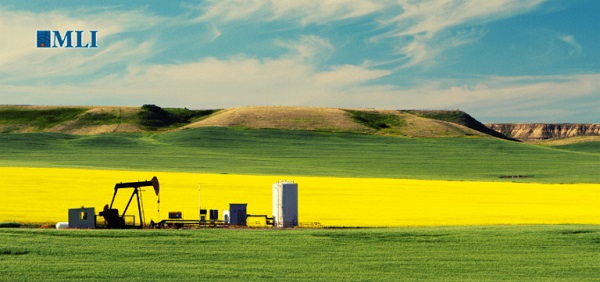Alberta
Province will not allow liquor sales in Alberta grocery and convenience stores

MLA committee completes liquor model review
Minister for Service Alberta and Red Tape Reduction Dale Nally has accepted recommendations to maintain the current liquor retail model.
After a comprehensive review, the MLA Advisory Committee tasked with evaluating Alberta’s liquor retail model has recommended to the Minister of Service Alberta and Red Tape Reduction that the province should not move forward with allowing liquor sales in grocery and convenience stores. The review into the potential expansion of liquor sales into grocery and convenience stores was initiated to explore the feasibility and impact of such a change on Alberta’s retail liquor industry.
“The idea of expanding liquor sales to grocery and convenience stores has been mused about for years. I’m grateful for the significant work done by MLAs to look into the feasibility and wisdom of such an expansion and the recommendations they’ve put forward. I am pleased to accept those recommendations and ensure Alberta continues to uphold our current model, which is one of the most open in Canada.”
The committee’s recommendation comes after extensive consultations with industry representatives, business owners and experts. The decision to uphold the current model was made to protect Alberta’s private liquor industry, which has been a pillar of economic growth and job creation since privatization in the 1990s.
“Alberta’s private liquor model is a jewel in the crown and allows small businesses to thrive while providing a wide variety of products and services. I accept the MLA committee’s recommendation to keep a level playing field and ensure the continued success of these businesses.”
“Expanding liquor sales to grocery and convenience stores may seem convenient for consumers, but it would have a detrimental effect on the retail liquor store industry. Our review determined that such a move would significantly harm small businesses and could ultimately lead to widespread closures, job losses and diminished selection for consumers.”
The MLA committee’s findings underscore the strength and diversity of Alberta’s existing private liquor model, which offers Albertans one of the most varied selections of alcohol in the country, along with competitive pricing and tailored customer service.
After consulting with members of the liquor industry and analyzing the economic effects, the committee concluded that expanding liquor sales to grocery and convenience stores would significantly harm Alberta’s existing private liquor retail model. Allowing sales of this nature would likely lead to widespread closures of independent liquor stores, job losses and a decrease in product variety and customer service. As a result, the committee recommended maintaining the current model to preserve the strength and stability of Alberta’s unique private liquor industry.
Quick facts
- With more than 1,600 stores and 36,000 liquor products, Alberta has one of the most open liquor markets in Canada.
- There are no barriers to listing a product in Alberta, as licensed liquor agents can pick and choose any products to bring into the province.
Alberta
Big win for Alberta and Canada: Statement from Premier Smith

Premier Danielle Smith issued the following statement on the April 2, 2025 U.S. tariff announcement:
“Today was an important win for Canada and Alberta, as it appears the United States has decided to uphold the majority of the free trade agreement (CUSMA) between our two nations. It also appears this will continue to be the case until after the Canadian federal election has concluded and the newly elected Canadian government is able to renegotiate CUSMA with the U.S. administration.
“This is precisely what I have been advocating for from the U.S. administration for months.
“It means that the majority of goods sold into the United States from Canada will have no tariffs applied to them, including zero per cent tariffs on energy, minerals, agricultural products, uranium, seafood, potash and host of other Canadian goods.
“There is still work to be done, of course. Unfortunately, tariffs previously announced by the United States on Canadian automobiles, steel and aluminum have not been removed. The efforts of premiers and the federal government should therefore shift towards removing or significantly reducing these remaining tariffs as we go forward and ensuring affected workers across Canada are generously supported until the situation is resolved.
“I again call on all involved in our national advocacy efforts to focus on diplomacy and persuasion while avoiding unnecessary escalation. Clearly, this strategy has been the most effective to this point.
“As it appears the worst of this tariff dispute is behind us (though there is still work to be done), it is my sincere hope that we, as Canadians, can abandon the disastrous policies that have made Canada vulnerable to and overly dependent on the United States, fast-track national resource corridors, get out of the way of provincial resource development and turn our country into an independent economic juggernaut and energy superpower.”
Alberta
Energy sector will fuel Alberta economy and Canada’s exports for many years to come

From the Fraser Institute
By any measure, Alberta is an energy powerhouse—within Canada, but also on a global scale. In 2023, it produced 85 per cent of Canada’s oil and three-fifths of the country’s natural gas. Most of Canada’s oil reserves are in Alberta, along with a majority of natural gas reserves. Alberta is the beating heart of the Canadian energy economy. And energy, in turn, accounts for one-quarter of Canada’s international exports.
Consider some key facts about the province’s energy landscape, as noted in the Alberta Energy Regulator’s (AER) 2023 annual report. Oil and natural gas production continued to rise (on a volume basis) in 2023, on the heels of steady increases over the preceding half decade. However, the dollar value of Alberta’s oil and gas production fell in 2023, as the surging prices recorded in 2022 following Russia’s invasion of Ukraine retreated. Capital spending in the province’s energy sector reached $30 billion in 2023, making it the leading driver of private-sector investment. And completion of the Trans Mountain pipeline expansion project has opened new offshore export avenues for Canada’s oil industry and should boost Alberta’s energy production and exports going forward.
In a world striving to address climate change, Alberta’s hydrocarbon-heavy energy sector faces challenges. At some point, the world may start to consume less oil and, later, less natural gas (in absolute terms). But such “peak” consumption hasn’t arrived yet, nor does it appear imminent. While the demand for certain refined petroleum products is trending down in some advanced economies, particularly in Europe, we should take a broader global perspective when assessing energy demand and supply trends.
Looking at the worldwide picture, Goldman Sachs’ 2024 global energy forecast predicts that “oil usage will increase through 2034” thanks to strong demand in emerging markets and growing production of petrochemicals that depend on oil as the principal feedstock. Global demand for natural gas (including LNG) will also continue to increase, particularly since natural gas is the least carbon-intensive fossil fuel and more of it is being traded in the form of liquefied natural gas (LNG).
Against this backdrop, there are reasons to be optimistic about the prospects for Alberta’s energy sector, particularly if the federal government dials back some of the economically destructive energy and climate policies adopted by the last government. According to the AER’s “base case” forecast, overall energy output will expand over the next 10 years. Oilsands output is projected to grow modestly; natural gas production will also rise, in part due to greater demand for Alberta’s upstream gas from LNG operators in British Columbia.
The AER’s forecast also points to a positive trajectory for capital spending across the province’s energy sector. The agency sees annual investment rising from almost $30 billion to $40 billion by 2033. Most of this takes place in the oil and gas industry, but “emerging” energy resources and projects aimed at climate mitigation are expected to represent a bigger slice of energy-related capital spending going forward.
Like many other oil and gas producing jurisdictions, Alberta must navigate the bumpy journey to a lower-carbon future. But the world is set to remain dependent on fossil fuels for decades to come. This suggests the energy sector will continue to underpin not only the Alberta economy but also Canada’s export portfolio for the foreseeable future.
-

 2025 Federal Election1 day ago
2025 Federal Election1 day agoMark Carney refuses to clarify 2022 remarks accusing the Freedom Convoy of ‘sedition’
-

 2025 Federal Election2 days ago
2025 Federal Election2 days agoLiberal MP Paul Chiang Resigns Without Naming the Real Threat—The CCP
-

 Business1 day ago
Business1 day agoSaskatchewan becomes first Canadian province to fully eliminate carbon tax
-

 2025 Federal Election2 days ago
2025 Federal Election2 days agoPM Carney’s Candidate Paul Chiang Steps Down After RCMP Confirms Probe Into “Bounty” Comments
-

 2025 Federal Election2 days ago
2025 Federal Election2 days agoFight against carbon taxes not over yet
-

 Automotive1 day ago
Automotive1 day agoElectric cars just another poor climate policy
-

 Business2 days ago
Business2 days agoTrump says ‘nicer,’ ‘kinder’ tariffs will generate federal revenue
-

 Energy1 day ago
Energy1 day agoWhy are Western Canadian oil prices so strong?





